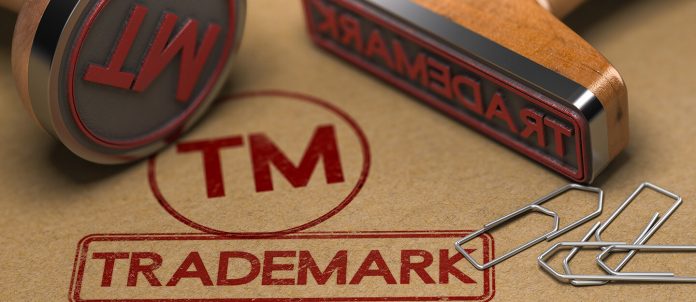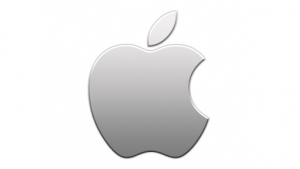This article is written by Nishant Gulyani pursuing a Diploma in Intellectual Property, Media, and Entertainment Laws from Lawsikho.
Table of Contents
Introduction
In today’s branded world, consumers are constantly exposed to trademarks in day to day lives. They identify the brands not with the company’s name but through their trademarks, like the swoosh symbol of Nike, three parallel lines of Adidas, a bitten apple for iPhones, and MacBooks. Customers not only identify the product with their marks but also trust them blindly regarding the price and quality of the products. A trademark is a name, logo, or design that distinguishes your product or service from another seller. It’s the trademark with which the customer identifies a product. These marks, when properly selected, become a valuable asset for the business by optimizing its advertising efforts, creating valuable customer recognition, and, as a result, more sales.
This article will explore the concept of proper trademark selection and its importance in enhancing the value of a brand, along with the drawbacks of improper trademark selection. You will learn to select a valuable trademark for your brand and its efficient use in the growth of your brand. By the end of this article, you will be able to distinguish a proper and valuable trademark from an improper trademark.
What is a trademark?
In layman’s language, a trademark can be termed as a source identifier, i.e., it identifies the source of origin of goods and services. It can be a word, logo, sign, a combination of signs, colour, combinations of colours, sound, and even smell. Its primary purpose is to differentiate the goods and services provided by one seller from those provided by another seller.
For example; the Apple logo, Nokia’s default ringtone, Coca-cola logo, Netflix Logo (written in a designed Red colour font).
What can be termed as a proper/valuable trademark?
A mark to be termed a valuable/proper mark:
- Should be dissimilar to the marks of other products and services falling into the same category as your products and services. For example, if you have a clothing brand, then your mark should not be similar to any other clothing brand’s mark, and if it is similar to any prior registered mark in the clothing category, then it is liable to be rejected under Section 11 of the Trademark Act, 1999. The category or class of goods and services can be accessed at WIPO NICE CLASSIFICATION.
- Should not designate the kind, quality of goods and services with which it is associated. For example, if you have a pizza store, you can not trademark the name “India’s best pizza”. It will be rejected under Section 9 of the Trademark Act, 1999, as it designates the kind and quality of your product (i.e. pizza).
Legal provisions under the Act
Section 9 of the Trademarks Act provides absolute grounds for rejection of your mark by the Trademark’s Registry. Under it, a trademark can be rejected if:
- It is not capable of distinguishing your goods or services from that of another seller (non-distinctive). For example, you can’t register the word ‘car’ for your car brand or the word ‘computer’ for your computer manufacturing company.
- It indicates the quality, quantity, or nature of your goods and services. For example, SkinCare can’t be registered for skincare products or services.
- It will confuse the consumers or deceive them.
- It contains some obscene content.
- It can hurt the religious sentiments of a particular section of society.
Section 11 of the Trademarks Act provides relative grounds for rejection of your mark by the Trademark’s Registry. Under it, a trademark can be rejected if:
- It is identical or deceptively similar to an earlier registered mark in the same class.
- It is identical or deceptively similar to a well-known mark in any of the classes.
- It is violative of someone’s copyright or identical/deceptively similar to a prior unregistered mark(protected by the action of passing off)
Global perspective
The United States
As per 15 U.S.C. § 1052, a trademark will be refused registration on the Principal Register of Trademarks if:
- It contains a flag or coat of arms of the U.S. or any foreign country.
- It contains any immoral or malicious content falsely posing a connection with any person, institution, or religion.
- It contains a name, sign, or portrait of any living person without their consent.
- It is a descriptive term. A descriptive mark gives the buyer a quick impression of what goods or services are provided under the mark. For example, you can’t register the mark ‘Best Hamburgers’ for your burger store.
- It deceives the customer by using false geographical indications.
- It designates the kind, quality, quantity, or purpose of the products and services to be sold under the mark.
- It is merely a surname.
- It is similar to a prior registered mark with the USPTO or an unregistered mark or trade name (prior use) in connection with identical goods or services.
Analysis
Although there is parity between the trademark laws of both countries, the only difference is between their approaches to trademark law while abiding by international conventions and agreements. The US laws provide an exhaustive list of grounds for rejection of trademarks, unlike Indian laws that are a bit vague and provide trademark lawyers with the opportunity to capitalize on the loopholes and ambiguity in the trademark act’s provisions.
The US has separate classification codes which further classify goods and services within an International Class (NICE Classification). These codes help them to distinguish products and services falling into the same class, hence reducing the number of disputes arising due to identical/confusingly similar marks in the same international class. India doesn’t have any such classification and relies solely on NICE Classification.
How can you select a proper/valuable trademark?
You can select a proper/valuable mark for your brand by:
1. Selecting a coined or fanciful mark
A coined mark is an invented mark/word that doesn’t have any meaning in the dictionary and has been invented for your brand only. For example, Kodak for photography products, Maggi for noodles, Google for a search engine, and Tupperware for kitchenware products are all coined and fanciful marks.
2. Selecting an arbitrary mark
An arbitrary mark is different from a coined mark as it has a dictionary meaning, but it is unrelated to the goods and services for which it is used. For example, Apple for mobile phones and computers, Amazon for e-commerce. These marks, Apple and Amazon, do have a meaning in the dictionary but are unrelated to the goods and services for which they are used. If Apple were used for selling apples, it would be outrightly rejected.
3. Conducting a comprehensive trademark search
For your mark in a similar class of your goods and services. A trademark availability search includes searching for the name of your product in the class of goods and services you want to sell to find out whether there are any products or services already registered with a similar name.
- A trademark search is conducted on different intellectual property portals of different countries. You need to conduct a search based on the jurisdiction where you want to register your mark:
Note: In well-known marks(popular or famous marks like AMUL or BAJAJ), you can’t seek registration in any of the classes with similar or identical marks. As such, you can’t register Gucci for even electronic products. The classes are different, but Gucci is a well-known mark and the average Indian consumer might be misguided that Gucci has entered the electronic market and, based on their goodwill, will buy the product.
- You should opt for a device mark using various words in an artistic arrangement that is unique and distinguishable in itself and does not directly designate the services applied under the mark. For example, McDonald’s mark or Zoom’s mark.
- You should also check the availability of domain names for your mark. You must ensure that your trademark is available with .com, .in, and several other extensions. To prevent fraudsters from registering your domain name, you should also register the.net and.org extensions for your brand.
How can proper trademark selection help your brand?
A proper and valuable trademark selection:
- Creates loyal customers: All the trusted brands in the market have registered valuable trademarks. A trademark assures customers of the consistent quality and fair prices of a product or a service offered by a brand. It helps in gaining the trust of your customers and building a loyal customer base for your brand.
For example, McDonald’s provides consistent quality burgers at all their stores, so when a customer purchases a burger from McDonald’s Outlet, he is assured that he is offered a quality product at a fair price.
- Loyal customers bring goodwill and a reputation in the market. People are more likely to purchase your goods and services because they believe they are of higher quality and priced fairly.
- It allows you to expand your business in the future and to add more products and services under your mark in the future. For example, Amazon in 2004 registered under class 9 for goods, namely downloadable software to retrieve data from third-party websites. Then, in 2010, it registered under class 45 for social networking services and then went on to add more and more services under its trademark Amazon. A proper/valuable trademark can work wonders for a brand, and Amazon is a living example of it.
Illustration – If you start a business in clothing, you can add on products like eye care and personal care under your mark once your brand becomes established in the market.
- It also enables easy expansion across state lines and jurisdictions, the detection of counterfeit goods, the enforcement of trademark rights, the licensing of manufacturing rights, the commercialization of services and franchise enterprises, and the charging of premium pricing.
For example, there are Apple stores all over the world, and you can buy their products from the store near you without any hesitation about the quality and price of their products.
How can an improper trademark selection kill your brand?
The main aim of trademarks is to identify the source of goods and services and to distinguish your goods and services from those of another seller. So, if you select a mark or name that is similar or identical to another mark and is somehow given registration, the main purpose of the trademark, i.e. to distinguish your goods and services from those of another seller, is defeated. There can be many drawbacks to selecting an improper/similar trademark.
If you somehow register a mark similar to some other mark, the consumer gets confused about who’s who. And if one of the parties develops a bad reputation, the other party that was not engaged in that act would be affected, as the consumer will tend to associate one with another. That is the reason we should select a trademark that distinguishes us from others. As customers not only remember the good quality products, the products that gave them a bad experience also stay intact in their memory. Once this image of your brand is set in the minds of consumers, there is no coming back.
Descriptive terms are weaker trademarks and are generally not registered unless they acquire distinctiveness over a period of time.
For example, if you have a business under the brand name Fresh Juice and, after one year of your business, you apply for the registration of your mark ‘Fresh Juice’, your application will be outrightly rejected and you will have no other option to change the name of your brand.
Your Mark ‘FRESH JUICE’, even if given registration after years of use and acquiring distinctiveness, may not be protectable against similar or identical products as the terms used here are very general and no one has exclusive rights to use the word fresh or juice.
Significant case laws
Starbucks Corporation v. Sardarbuksh Coffee & Co. & Ors
Facts– Starbucks Corporation filed a trademark infringement suit against an enterprise, namely Sardarbuksh Coffee & Co. The respondent was engaged in similar services as Starbucks with an identical logo (two concentric circles) and a phonetically similar name, i.e., Sardarbuksh.
Issue– Whether both trademarks are identical or deceptively similar to each other?
Rules and provisions– As per section 11 (2) of the Trademark Act, 1999, a trademark shall be refused registration if it is identical or similar to an earlier registered mark.
According to Section 29 of the Trademark Act, 1999, a registered mark
Judgment– The court held the trademark SARDARBUKSH is phonetically similar to the mark of the complainant and ordered the respondent to modify its mark to SARDAR-JI- BAKSH.
Analysis– The respondent was using his mark SARDARBUKSH for similar services (Class 35) as the complainant with an identical/deceptively similar logo. This indicates that the respondent wanted to ride on the goodwill of the complainant and capitalize on the confusion caused by a similar name and logo.
Turning Point & Anr. v. Turning Point Institute Pvt. Ltd.
Facts– Two entities, i.e. Turning Point Pvt. Ltd and Turning Point were using an identical mark “TP Turning Point” and were providing similar services (educational). A passing off suit was filed by the Turning Point Pvt. Ltd in 2015 restraining the Turning point from using the said mark against which an appeal was filed by the Turning point in 2017 alleging the prior use of the trademark “TP Turning Point”.
Issue– Whether the Appellant (Turning Point) is the prior user of the mark “TP Turning Point” and the respondent is trying to encash on the goodwill of the Appellant?
Rules and provisions– As per section 34 of the Trademark Act, “the proprietor of registered trademark cannot interfere with the use of any identical or similar mark if the person has been using the mark from an earlier date”
Judgment– The Appeal was allowed by the Divisional Bench of the Delhi High Court and the proceedings are still going on the high court.
Analysis– In a passing-off lawsuit, prior use and goodwill are two of the essential factors that must be clearly established by the party requesting an injunction.
These case laws clearly establish the consequences of an improper trademark selection and why you should always conduct a comprehensive trademark search before filing the trademark application for your brand.
Conclusion
We conclude that a trademark is a valuable commercial asset that helps to establish a brand in the marketplace. It makes no difference if your company is big or small. You should always choose a proper trademark and apply for registration. It all begins with a single step. A valuable trademark can bring you- loyal customers and wide recognition in the market. It can help you expand your business across the boundaries and by adding various other services under the mark. While selecting a mark for your brand, you should always avoid generic and descriptive terms and opt for arbitrary and coined marks. Conducting a trademark availability search on different IP portals is a must to avoid any hassles in the registration process. Following the above-listed steps will ensure that you select a proper trademark that becomes a valuable asset for your brand and eventually helps your brand to reach new heights of success.
References
- https://www.milordlaw.com/five-costly-mistakes-to-avoid-in-choosing-a-trademark-tips-from.html
- https://www.inta.org/fact-sheets/trademark-strength/
- http://www.taylorporter.com/blog/post/types-of-trademarks
- http://faheyiplaw.com/how-to-select-a-good-trademark/
- https://www.thebalancesmb.com/how-to-select-a-good-trademark-2948672
- https://www.uspto.gov/sites/default/files/documents/tmlaw.pdf
Students of Lawsikho courses regularly produce writing assignments and work on practical exercises as a part of their coursework and develop themselves in real-life practical skills.
LawSikho has created a telegram group for exchanging legal knowledge, referrals, and various opportunities. You can click on this link and join:
 Serato DJ Crack 2025Serato DJ PRO Crack
Serato DJ Crack 2025Serato DJ PRO Crack
















 Allow notifications
Allow notifications



